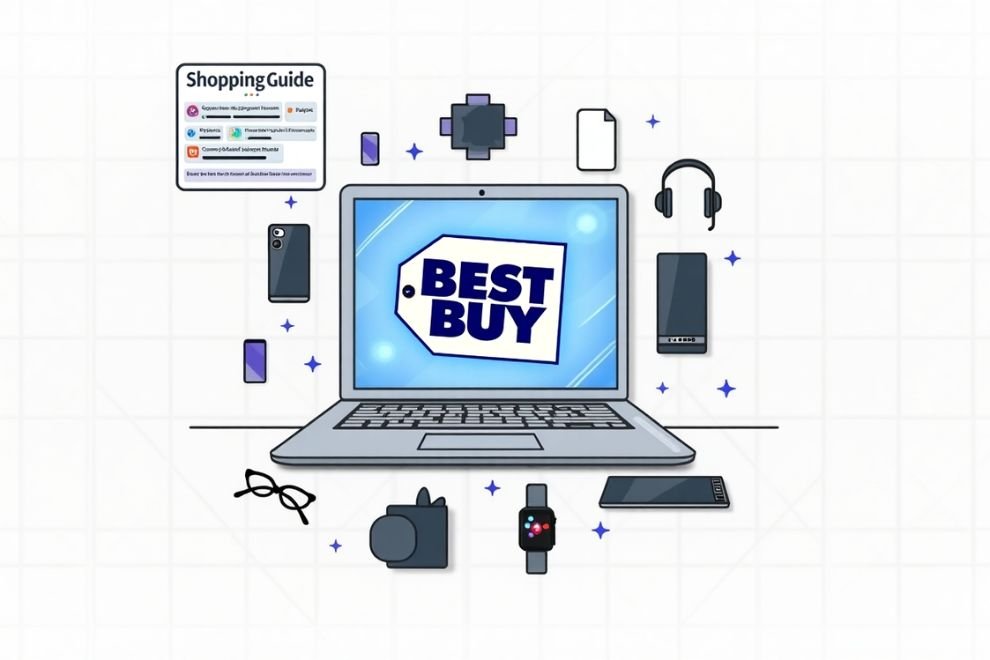What Tech Founders Need to Know About Entering Healthcare

Breaking into the healthcare space can feel like opening a new door to massive opportunity and a flood of unfamiliar responsibilities. For tech founders, the appeal of solving real-world health challenges with innovative software, devices, or data systems is strong. But the leap from general tech to healthcare tech requires more than just great engineering. It demands a clear understanding of compliance, patient data protection, and federal regulations. Entering the healthcare industry brings you into a regulated world with strict requirements regardless of what you’re building. Because at the end of the day, the goal is to build something that works safely, securely, and legally in the context of patient care. So, how do you shift from innovation to regulation without losing your momentum? Let’s explore the key areas tech entrepreneurs need to focus on as they expand into the healthcare market. Why Healthcare Tech Is a Different Playing Field Most startup founders are familiar with terms like “user data,” “cybersecurity,” and “cloud storage.” But in healthcare, those terms take on an entirely different level of significance. That’s because you’re often handling Protected Health Information (PHI). This includes anything from medical histories and insurance records to biometric data and lab results. In the United States, the Health Insurance Portability and Accountability Act (HIPAA) sets the standards for how PHI is stored, accessed, and transmitted. If your product interacts with patient information in any way, you’re likely subject to HIPAA rules. And if you don’t follow them, your company could face significant consequences, including legal penalties, financial losses, or even being barred from the market. This is where many well-meaning startups go wrong. They build incredible tools, only to realize too late that their architecture doesn’t meet compliance standards. Retrofitting compliance is always more complicated than baking it in from the start. Building with Compliance in Mind Entering healthcare means shifting your mindset early on, from building to building responsibly. And while that might sound like it slows things down, it speeds up long-term success. Investors and partners are far more likely to engage with health tech companies that demonstrate clear compliance processes. Hospitals, clinics, and insurers will also require your platform to meet rigorous standards before considering a pilot or partnership. That means your infrastructure, team practices, and documentation all need to reflect an understanding of healthcare data rules. A great place to start is by reviewing a HIPAA compliance checklist. This will help you break down what’s required in areas like risk assessments, employee training, encryption, data access controls, and breach notification procedures. This kind of guidance can be invaluable, especially if your background is in traditional tech startups, where regulations are often much looser. Key Areas to Get Right from Day One Getting key areas right from the start is essential when building a healthcare tech product. First, your data handling architecture must meet HIPAA standards. This means encrypting data both at rest and in transit, implementing secure access control systems, and ensuring any cloud-based storage complies with regulatory requirements. Next, pay close attention to Business Associate Agreements (BAAs). If you’re using third-party vendors, such as cloud services, analytics platforms, or customer support tools, you’ll likely need to sign BAAs to ensure they also meet HIPAA standards. Strong access controls and authentication are also vital, as every team member who interacts with protected health information (PHI) must have a unique login and appropriate permission levels. Multifactor authentication (MFA) should be standard, and you should regularly review access. Beyond technical safeguards, employee training and internal policies play a significant role in compliance as well. All team members, whether they’re developers, designers, or marketers, should receive basic HIPAA training. Your internal documentation should also include clear procedures for data handling, incident response, and breach reporting. Lastly, don’t overlook audit trails and monitoring. HIPAA requires systems to log who accessed PHI, when, and for what purpose. Real-time monitoring tools can help you quickly detect any unauthorized access or security incidents, allowing for swift corrective action. The Hidden Benefits of Doing It Right The hidden benefits of doing it right go far beyond simply meeting regulatory requirements, as building a compliant product is ultimately about building trust. In healthcare, where decisions can impact lives, trust is everything. When your platform is secure and compliant, clinics and providers are more likely to adopt your solution, patients feel more confident sharing their information, and regulatory challenges become much easier to navigate. Even investors take notice, viewing your company as a credible and scalable venture. In short, HIPAA compliance can be a powerful competitive advantage. Common Pitfalls to Avoid If you’re new to the healthcare space, it’s easy to fall into common traps that can derail your progress. One frequent mistake is assuming HIPAA doesn’t apply. However, if you’re working with real patient data — even in a beta version — it absolutely does. Another pitfall is leaving compliance to the last minute, which can lead to costly and time-consuming retroactive fixes. Some founders mistakenly view compliance as purely an IT issue when, in fact, it spans the entire organization, from HR and sales to legal and operations. Additionally, many overlook the importance of state-specific laws. While HIPAA sets federal standards, individual states like California and New York often have stricter regulations that must also be followed. Consulting with a healthcare compliance advisor early in your development process can help you avoid these missteps before they become serious problems. Moving from Tech Founder to Healthcare Leader Making the move into healthcare is not about abandoning your innovative instincts. It’s about pairing those instincts with the responsibility that comes with managing sensitive health information. The good news is you don’t have to reinvent the wheel. There are plenty of resources, like HIPAA checklists, legal guides, and compliance frameworks, to help you navigate the transition. By embracing regulation as part of your product journey, you build a company that’s not only inventive but resilient, trusted, and built for long-term impact in a field that genuinely matters.
World War III Memes: How Gen Z Uses Dark Humor to Cope Online

Why “World War III” Is Trending Escalating tensions in different parts of the world have sparked new fears about global conflict. Instead of panic, many young people are expressing their anxiety in the form of World War III memes—turning serious headlines into viral dark humor. How Gen Z Is Reacting For Gen Z, humor is a way to cope with overwhelming situations. From ironic tweets to absurd memes, the internet is flooded with jokes about a possible World War III. While the topic is serious, the memes reflect how young people manage stress through satire and collective laughter. Why Memes Matter in Times of Crisis 1. Shared Emotional OutletMemes provide a space for people to connect over common fears and frustrations, using humor as relief. 2. Instant Cultural CommentaryOnline trends like World War III memes show how quickly internet culture reacts to global events—faster than traditional media. 3. A Modern Coping MechanismDark humor helps people process fears that feel too big or too distant to change directly. Memes turn worry into something sharable and relatable. What This Trend Reveals About Online Culture Tips for Observing or Sharing These Memes Final Thoughts The rise of World War III memes highlights how digital communities process global fears through dark humor and viral jokes. For Gen Z, it’s a way to cope, connect, and comment on the world—one meme at a time.
Best Buy Shopping Guide: Deals, Reviews, and Tips for Smart Electronics Shopping

Best Buy is one of the most trusted names in electronics retail in North America. Known for its wide range of products, competitive prices, and convenient shopping experience, Best Buy has remained a top choice for consumers looking for the latest gadgets, home appliances, and tech accessories. In this guide, we’ll share the best ways to shop at Best Buy, how to find great deals, and what you need to know to make the most of every purchase. Why Shop at Best Buy? Best Buy stands out for its extensive selection of electronics, from laptops and smartphones to smart home devices and gaming gear. Customers appreciate its competitive pricing, price-matching policy, and flexible return options. Best Buy’s Geek Squad services also offer expert tech support, installation, and repairs, making it a go-to store for hassle-free electronics shopping. How to Find the Best Deals at Best Buy Tips for Smart Best Buy Shopping Final Thoughts Whether you’re upgrading your home theater, buying a new laptop for work, or searching for smart home gadgets, Best Buy remains a trusted one-stop shop for electronics and tech essentials. By staying alert for deals and using smart shopping strategies, you can get the best value every time you shop. Looking to make your next electronics purchase?Bookmark this Best Buy shopping guide to save money and shop smarter all year round.
Top 10 Richest Men in India 2025

Introduction India is home to some of the world’s most powerful and visionary entrepreneurs. With a booming economy, strong startup culture, and thriving industries, Indian billionaires are making a global mark. From oil to tech, telecom to infrastructure, here are the top 10 richest men in India in 2025, based on estimated net worth and market influence. 1. Mukesh Ambani 2. Gautam Adani 3. Shiv Nadar 4. Savitri Jindal & Family 5. Cyrus Poonawalla 6. Radhakishan Damani 7. Kumar Mangalam Birla 8. Dilip Shanghvi 9. Uday Kotak 10. Sunil Bharti Mittal Final Thoughts These top 10 richest men in India in 2025 represent the strength, diversity, and ambition of the Indian economy. From building global tech companies to reshaping India’s infrastructure and healthcare systems, these individuals are driving change not only in India but across the world. Their journey is a powerful example of vision, resilience, and innovation—inspiring millions of budding entrepreneurs and investors across the country.
Top 10 YouTubers in India 2025

Introduction YouTube has grown into one of India’s largest platforms for entertainment, education, and digital content creation. With millions of daily viewers, Indian YouTubers have created massive audiences and loyal communities. From comedy and gaming to tech and lifestyle, these creators have turned their passion into full-fledged careers. Here’s a curated list of the top 10 YouTubers in India in 2025, based on popularity, influence, subscriber count, and content diversity. 1. CarryMinati (Ajey Nagar) 2. Ashish Chanchlani Vines 3. Amit Bhadana 4. Total Gaming (Ajjubhai) 5. BB Ki Vines (Bhuvan Bam) 6. Sandeep Maheshwari 7. Round2hell 8. Techno Gamerz (Ujjwal Chaurasia) 9. FactTechz 10. Triggered Insaan (Nischay Malhan) Final Thoughts India’s YouTube scene is more vibrant than ever. These top 10 YouTubers represent creativity, consistency, and deep audience engagement. Whether you’re looking for laughs, learning, or entertainment, these creators have something for everyone. As internet access grows and digital content evolves, the influence of Indian YouTubers is only set to rise. If you’re aspiring to be a creator, these names are the perfect inspiration to start your journey.
What to Know About Filing a Zantac Claim in North Carolina

Zantac is a brand name for a medicine called ranitidine. It is used to treat stomach sores, acid reflux, and heartburn. Zantac reduces the amount of acid in the stomach, making people feel better after eating or when they have stomach problems. Recently, Zantac was tested and found to contain a harmful chemical called NDMA. Zantac was taken off the market since NDMA is linked to cancer. Many people who took Zantac and later got sick are now filing legal claims to ask for help or compensation. Nearly 2,500 cases against Zantac were still being worked on in federal multidistrict litigation as of early June 2025. Since the lawsuits started, over 15,000 claims have been made. North Carolina Zantac attorney William M. Graham states that if you or a loved one has been diagnosed with cancer and you believe the cause may be linked to ranitidine, you may have a case for legal action. If you took Zantac and are worried about your health, consult a doctor and possibly a lawyer. This article will guide you on how to file a legal Zantac claim. Understanding the Health Risks Associated With Zantac In the majority of cases, you simply do not consider Zantac as something that might cause health impacts. According to research, ranitidine from Zantac can change into N-nitrosodimethylamine, or NDMA for short. NDMA is a likely carcinogen. If you take Zantac for a long time, you might be more likely to get some types of cancer, like stomach and bladder cancers. If you’ve been taking the drug for a long period, watch out for indicators like stomach pain, losing weight quickly for no reason, and changes in how your urine and bowel movements look. If you are worried, you might want to talk to your health care provider. If you know about these risks, you can talk to your doctor about the best treatment choice without any bias. Your decision to meet with a doctor will allow an active preventive approach concerning your health. Steps to Take Before Filing a Claim Gathering information and documentation is necessary before filing actual Zantac claims. Start by collecting your medical records, including diagnoses and treatments related to Zantac usage. Write down any symptoms you have experienced and the dates. Be sure to note down the entire history of your use of Zantac, including the date of consumption, the dosage taken, and for how long. See to it that you keep your records of any medical advice or healthcare professional consultation you may have had regarding your symptoms. Try getting information from an attorney who handles Zantac claims about your rights and compensation possibilities. Watch for the filing deadlines, as these determine whether you can pursue your claim or not. Taking these steps will place your case on firm footing. Gathering Evidence for Your Zantac Claim When putting your Zantac claim together, try to think of gathering concrete evidence supporting your case. Begin by acquiring your medical records relating to diagnoses, treatment plans, tests, etc., regarding your health problems occurring after taking Zantac. Write down details about your symptoms, how fast they appeared, and the medical checkups you’ve had. In case you suffer from any side effects, get some eyewitness accounts from family and friends that can testify to your condition. Keep receipts and documents for every single purchase of Zantac. Review any relevant studies or reports connecting Zantac to health hazards. Organizing these pieces of evidence will strongly support your claim and demonstrate the harmful effects of Zantac in your life and daily activities. Legal Timelines and Deadlines in North Carolina Understanding legal timelines and deadlines for filing a Zantac claim in North Carolina is important since missing these dates could compromise your claim. In general, from the time you noticed your injury, you have 3 years to file a claim. The 3-year period you are given to file your claim is known as the statute of limitations. If one waits beyond the time, they could potentially lose the right to seek compensation. If you are filing a claim against a government entity, then there might be a short window, typically just a few months. Promptly collect all evidence needed. Being aware of the timelines will keep you organized for when the time to act arises. Finding the Right Legal Representation Look for attorneys with a focus on pharmaceutical litigation if you want your Zantac claim in North Carolina to have proper legal representation. You want to find a law firm with experience specifically in handling Zantac cases. Inquire about their experience with similar lawsuits, their success, and how they plan to handle your case. Try to see how comfortable you are with the lawyer you are thinking about hiring. Communication is critical so you need to read client reviews and testimonies about the lawyer. Costs are something that you do not want to forget to ask about. You will always want to know what you are getting into. Choosing the right lawyer for your case can make or break the outcome. Think first about what you want and need. To preserve your health and get appropriate recompense, it’s necessary to hire a competent lawyer.
Building Stronger Teams Through Diversity, Equity, and Inclusion Practices

Introduction Teams integrating diversity, equity, and inclusion practices into their framework stand out for their resilience and achievement. The modern workplace thrives on the power of difference, and organizations increasingly prioritize DEI as an essential business. When everyone’s unique talents and perspectives are valued, teams become more adaptable and capable of responding to evolving challenges. This article explores the foundations of building stronger teams through DEI practices and provides practical insights for creating dynamic and empowered groups. The Importance of Diversity, Equity, and Inclusion Diversity, equity, and inclusion are interconnected pillars that strengthen teams. Diversity brings together individuals with varied backgrounds, education, and experiences, contributing to a rich pool of ideas and viewpoints. Equity ensures all team members can access the opportunities and resources needed to perform at their best. Inclusion makes sure that every individual feels respected and empowered to contribute. You can visit this site https://www.traliant.com/courses/diversity-equity-inclusion-at-work/, which emphasizes that teams experience stronger problem-solving skills and improved morale when intentionally diverse and inclusive. These practices support organizational goals and stimulate both personal and professional growth within the team. The presence of equity ensures no one is left behind and everyone can realize their full potential. DEI is critical for positive workplace culture and sustainable performance. Foundations of Diversity in Teams Diversity encompasses far more than visible characteristics. It includes differences in thought, communication style, learning preferences, work experience, and problem-solving approaches. Teams built on diverse perspectives can examine situations from multiple angles, leading to well-rounded and innovative decisions. Exposure to new viewpoints allows team members to grow, learn, and challenge existing assumptions. When organizations invest in fostering diversity across departments and levels, they tap into the full spectrum of human potential, driving creative solutions and robust decision-making. Consciously recruiting individuals from varied backgrounds sets the stage for richer interaction and exchange. Diverse teams better reflect the broader community and customer base, allowing organizations to serve their markets with greater understanding. As the workplace evolves, diversity is recognized as a vital asset for meeting the demands of global and interconnected environments. The foundation of team strength relies on building an environment where different voices have room to shine. Equity and Embracing Fairness Equity is the bridge that enables diversity to flourish. It means every team member has a fair chance to contribute and succeed, regardless of their starting point. Equity goes beyond equality by recognizing that individuals may have unique needs or face particular barriers. It dismantles these obstacles and tailors resources—whether that means providing mentorship, training, or accommodations—to create an even playing field. Teams become stronger when equity is part of the culture. Recruiting, evaluation, and career progression are designed with fairness in mind. Everyone has transparent guidelines for advancement and knows that contributions are recognized based on merit. By removing systemic biases, equity builds trust among team members. Trust, in turn, increases commitment, motivation, and engagement, all of which drive superior team performance. Creating an Inclusive Environment Inclusion transforms diversity from a concept into a daily reality. It refers to the active, intentional, and ongoing effort to ensure every team member has a voice and feels connected to their colleagues. Inclusive environments are characterized by open communication, shared responsibility, and mutual respect. When organizations prioritize inclusion, team members experience a sense of belonging beyond simply being present—they know they genuinely matter. Practical ways to promote inclusion include creating space for input in meetings, encouraging candid feedback, and recognizing unique contributions. Leaders can demonstrate inclusivity by being approachable, actively listening, and providing regular opportunities for all employees to participate in decision-making. Inclusion is the glue that binds diverse teams together, creating a culture where collaboration thrives. Building Collaborative and Engaged Teams Collaboration is the hallmark of high-performing teams. DEI practices foster teamwork by leveraging individual strengths and minimizing the risk of miscommunication or misunderstanding. Diverse teams anticipate different viewpoints and approach collaboration with curiosity and empathy. This environment supports honest dialogue and cooperative problem-solving, resulting in higher quality outcomes. Engaged teams demonstrate greater productivity, lower turnover, and increased well-being. Their motivation rises when people see that their knowledge and skills are needed and celebrated. DEI also impacts how teams handle conflict, transforming disagreements into healthy debates that refine solutions. Leaders who champion DEI contribute to a cycle of positive engagement, where every team member is invested in shared success. Measuring Success in DEI Practices Organizations must assess and measure the impact of DEI initiatives to ensure continued progress. Metrics may include analyzing employee retention rates, tracking participation in team activities, and soliciting regular feedback on workplace climate. Strong teams pay attention to their members ‘ sense of belonging and engagement—analytical data, when paired with employee feedback, reveals strengths and opportunities for improvement. Regular evaluation of DEI practices supports transparency and holds organizations accountable to their commitments. Successful assessment leads to continual strategy refinement, maintaining momentum, and growth. When teams see the positive results of their efforts, they reinforce a cycle of ongoing improvement, deepening commitment to inclusive values. Conclusion Integrating diversity, equity, and inclusion practices into team dynamics is a transformative process that produces measurable benefits. Diverse teams generate more ideas, equity ensures fair participation, and inclusion brings out the best in every member. These elements are not just ideas but are practical tools for strengthening bonds, enhancing performance, and creating a vibrant workplace culture. Stronger teams emerge from a foundation built on respect, fairness, and openness, setting the stage for enduring achievement and lasting impact.
Custom Supplement Formulation: What Businesses Need to Know

If you’re considering starting up your own supplement brand, you’re certainly not alone. The supplement industry is exploding these days, and having your own custom formulation is a fantastic way to enter into the fray. However, before you go all in, take a look at a lot of the information you need to know first. To put it simply, custom supplement formulation is essentially creating unique products tailored to your brand’s vision and your customers’ needs. Instead of slapping your label on existing products, you’re building something from the ground up. It’s like being the architect of your supplement empire. The Whole Process in a Nutshell The journey begins with your concept. What problem are you solving for your customers? Maybe it’s better sleep, increased energy, or improved focus. Your formulator will take this idea and translate it into a science-backed reality. Here’s what typically happens: You’ll work with a team of experts who understand how different ingredients interact with each other. They’ll consider factors like bioavailability (how well your body absorbs the nutrients), stability (how long the product stays effective), and compatibility (making sure ingredients don’t cancel each other out). The process isn’t quick. Expect several rounds of testing and refinement. Your first formula might not be your final one, and that’s perfectly normal. Ingredients and What Part They Play You’ll encounter two main types of ingredients: active and inactive. Active ingredients are the stars of the show – the vitamins, minerals, herbs, and compounds that deliver the promised benefits. Inactive ingredients are the supporting cast, helping with things like: Don’t underestimate the inactive ingredients. They can make or break your product’s success. A supplement that tastes terrible or falls apart won’t win any loyal customers. All the Regulations The FDA doesn’t approve supplements like they do prescription drugs, but that doesn’t mean you can do whatever you want. You’re still bound by strict labeling requirements, good manufacturing practices, and safety standards. Your claims matter tremendously. You can’t promise to cure diseases or make outrageous health promises. Structure-function claims are your friend – these describe how a nutrient affects normal body functions without claiming to treat specific conditions. Documentation is your lifeline, keeping detailed records of everything from ingredient sourcing to quality testing. If questions arise later, you’ll need this paper trail. Who To Partner With? Not all manufacturers are created equal. You want someone who understands your vision and has the technical expertise to make it happen. Look for facilities that are GMP-certified and have experience with your type of product. Ask about their testing capabilities. Quality control should happen at multiple stages, not just at the end. Your manufacturer should test raw ingredients, monitor the production process, and verify that the final product meets specifications. Communication is crucial. You need a partner who keeps you informed throughout the process and responds quickly to your questions. So Many Things To Consider Success in custom formulation isn’t just about creating a great product – it’s about creating the right product for your audience. Research your market thoroughly. What gaps exist? What are customers complaining about with the current options? Consider your delivery method carefully. Capsules, tablets, powders, and liquids each have advantages and challenges, but your choice should align with your target customer’s preferences and lifestyle. Keep in mind that custom formulation is an investment in your brand’s future. Done right, it sets you apart from competitors and builds customer loyalty that generic products simply can’t match.
Why Practicing with CA Daily Quizzes Boosts Exam Confidence

Have you ever walked into an exam room feeling unsure? That nervous feeling often comes from not knowing what to expect. But what if you could walk in calm, clear, and ready? The secret lies in how well you prepare—and how often you test yourself. Daily practice is one of the most powerful ways to build real confidence. And when it comes to current affairs, there’s a smart way to stay sharp. Credible tools like Optimum CA quizzes offer daily quizzes that help you grow your knowledge step by step. These quizzes are built to match real exam patterns and give you the tools to succeed. Its structured, easy-to-follow quizzes make learning current events simple and effective. Each quiz gives you instant feedback and clear explanations. Learning Becomes Manageable and Enjoyable When you take a few minutes each day for a quiz, learning doesn’t feel like a burden anymore. Instead of trying to cover everything at once, you break it down into small, digestible bits. This makes staying updated feel light and even fun. You start looking forward to your daily practice instead of putting it off. Over time, tough topics begin to feel easier because you’ve been exposed to them regularly. You absorb facts without realising how much you’re learning. And as your understanding grows, so does your comfort level with the subject. That quiet sense of control translates directly into stronger exam confidence. Staying Updated Feels Effortless Current affairs change all the time, which means staying informed is a must. But reading long articles or notes every day can be exhausting. With short, focused quizzes, you get the latest updates without extra effort. Important news is broken down into key points and presented in a way that’s easy to remember. You learn names, dates, policies, and events naturally through repeated exposure. There’s no need to cram before the exam because you’ve already built a solid foundation. By making learning part of your daily routine, you stay ahead without stress. And being well-prepared is the best way to walk into any exam with calm and clarity. Real Exam Practice Builds Real Readiness One of the biggest benefits of using daily quizzes is that they mimic actual test conditions. They follow the same format, timing, and question styles you’ll see on exam day. This kind of practice trains your brain to work under pressure. You learn to read carefully, choose wisely, and manage time better. Mistakes come with clear explanations, helping you avoid repeating them. As you keep going, you start recognising patterns in the questions. Your accuracy improves, and so does your speed. You become familiar with the rhythm of the test. That familiarity takes away fear and replaces it with readiness. When the real exam arrives, you’re not guessing—you’re prepared. Tracking Progress Gives Clarity and Motivation As you take quizzes every day, you start seeing your scores go up. Watching your own growth over time is incredibly motivating. You begin to notice areas where you’re strong and spots where you still need to improve. This self-awareness lets you focus your efforts where they matter most. You stop wasting time on things you already know and spend more on what you don’t. Seeing progress week after week builds real belief in your abilities. Each small win adds up to a bigger picture of success. And that growing sense of achievement becomes the fuel that keeps you going, even on tough days. With tools like Optimum CA quizzes, building exam confidence isn’t about luck or last-minute prep. It’s about showing up every day, learning a little more, and growing stronger with each quiz. You begin to trust yourself because you know how much effort you’ve put in. If you’re serious about improving your performance, it’s time to try a smarter way to study. Start today, stay consistent, and let your confidence grow the right way.
The 30-Year-Old Prodigy: Which Sports Reward Late Bloomers in 2025?

Ever watched the Olympics and felt you missed your shot because you didn’t start young? That old story is fading. In 2025, athletes are peaking in their late 20s and 30s, proving elite greatness doesn’t demand a cradle to podium path. This late bloom revolution stands on three pillars: strategically picking your sport, fusing with cutting edge science, and wielding hard won wisdom as your battle tested edge. It’s unfolding within a sports landscape where platforms like this site exist as part of the broader ecosystem, though the real focus remains on the athletes’ journeys. Discover which sports roll out the red carpet for older newcomers (think open water swimming or road cycling), how career-switching athletes pivot to seize second-act glory, and the raw blueprint of relentless grit, leveraged genetics, and tactical genius for going pro when life’s already roaring past halftime. The Time-Friendly Sports Not every sport demands teenage reflexes. Many reward strengths that deepen with age: endurance, strategy, and precision. These fields welcome late starters. Ultra-Endurance: Marathon Swimming Victory here comes from mental fortitude, not speed. Athletes peak between 28 and 35 through relentless pacing and grit: steady hands guiding through fatigue like a seasoned captain navigating rough seas. Experience is your compass, reading currents, conserving energy, outlasting the pack when lungs burn. This punishing arena doesn’t just tolerate older newcomers, it celebrates them. Precision Arts: Archery and Shooting These demand unwavering focus and control, not explosive power. Like master craftsmen refining their art, athletes sharpen aim well into their 30s and beyond. Consistency defeats youthful speed. Strategic Games: Curling Curling, nicknamed “chess on ice,” thrives on planning and patience. It’s less about outrunning anyone and more about outsmarting them. Older athletes, with years of problem-solving under their belts, often excel. It’s the kind of game where a seasoned playbook trumps a fast break. The Reinvention Path Some athletes find new glory not by blooming late but by switching sports. Their past skills become a springboard, not a dead end. Collision Sport Refugees: Rugby to Rowing Rugby players, built for power and grit, transition seamlessly to rowing. Both demand strength, but rowing avoids brutal collisions. It’s moving from the wrestling mat to the water, keeping intensity while reducing wear. Rugby veterans now power elite crew teams. Gymnast Conversions: Aerial Skiing or Diving Gymnasts leverage flexibility and aerial awareness to excel in skiing or diving. Their mastery of twists and body control transfers directly, like a dancer adapting choreography. Former gymnasts trade beams for ski jumps, turning old skills into new podiums. See Lolo Jones, a track Olympian who turned bobsledder, or Herschel Walker, an NFL legend who dominated mixed martial arts after football. Their pivots prove that athletic skills adapt across arenas, never expiring. The 2025 Training Edge Sports science in 2025 acts like a pit crew for your body, optimizing performance and extending careers. Here’s how it levels the field: Recovery Science Cryotherapy speeds healing through extreme cold, turbocharging recovery. Advanced sleep tech optimizes rest cycles. Together, they help older athletes rebound faster, narrowing the gap with younger competitors. Neural Plasticity Your brain keeps rewiring into adulthood. Virtual reality drills let athletes master skills without joint strain, updating neural pathways like software. Research confirms older athletes can learn complex skills with proper training, though individual results vary as this field evolves. The Mental Advantage Age brings more than wrinkles, it packs a mental punch. Older athletes often handle big moments better, like a veteran DJ keeping the crowd steady. Chessboxing favors tempered veterans over explosive youth. Their secret weapon? Maturity honed for combat: calm eyes that dissect chaos, weathered instincts rationing violence like wartime currency. That’s the quiet thunder of experience winning. This hard-won edge translates anywhere pressure builds, from ice in a curling end to steadying breath at a shooting final, making cold decisions when everything burns. Your Realistic Pro Timeline How long to go from newbie to contender? It hinges on the sport and your grit, but here’s a rough map: These are ballpark figures, based on trends in athlete training. Your journey might differ, but the path’s real if you commit. Why This Matters The myth that elite sports belong only to the young is fading. Marathon swimming, archery, and curling prove that late starters can thrive. Reinvention, like NFL vets becoming bobsledders, is valid. The path is wider than ever, paired with modern tech like cryo and VR. This isn’t about gold medals for all. It’s finding your fit, leveraging your strengths, and training smart. You might not replicate the Miracle on Ice, but you can write your own story. Ready? Explore local clubs, connect with coaches, and try these sports. The door’s open; your move.
